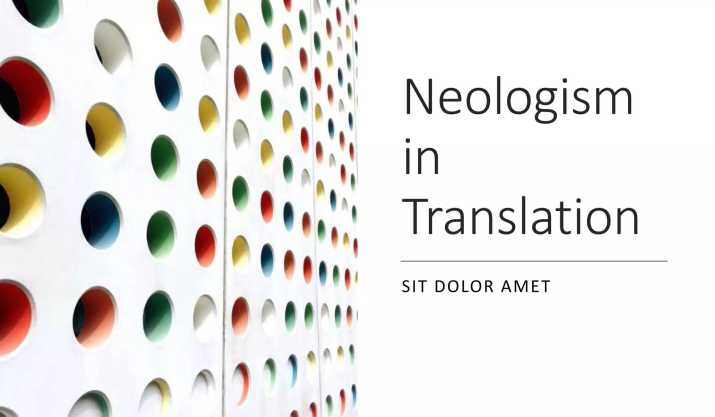Translating Slang and Neologisms: A 21st‑Century Challenge

Why bother translating slang at all? Because language is changing faster than we can get used to new words. The internet, social media, memes — they generate fresh expressions daily. And if professional translation is meant to reflect contemporary thinking, translators can’t ignore this living layer of language. Every meme, inside joke, or TikTok expression turns into a test of creativity and cultural awareness.
What do we mean by “slang” and “neologisms”
Slang is a language within a language. It emerges in communities and follows its own rules. Teenagers, gamers, marketers, programmers — each group has its own vocabulary. Neologisms, meanwhile, appear at the intersection of technology and culture: “to stream,” “to DM,” “to binge.” They quickly enter our speech, then either vanish or become standard more quickly than dictionaries can catch up. For a professional translator, this means constant adaptation — staying current and culturally fluent.
Why slang is so hard to translate
The toughest part about slang is that its meaning often depends less on words and more on tone, identity, and shared experience. Translate literally and you’ll get nonsense — or lose the humor entirely. Take the Spanish expression “echar chisme,” literally “to throw gossip.” Rendered word for word, it’s confusing, but in context it simply means “to spill gossip” or “talk about drama.”
A translator has to go beyond language and grasp the culture that created the phrase. Without that sensitivity, any translation feels robotic. That’s why every professional translation dealing with slang depends on intuition as much as on dictionaries.
Localization instead of literal translation
When we deal with memes and internet jokes, it’s more accurate to talk about localization than translation. Localization means adapting context and culture together. For instance, a U.S. meme about college dining halls makes little sense in London or Berlin unless we reframe the joke around something familiar — maybe cafeteria food or school lunches. In such cases, the translator becomes the co‑author of a local version, preserving the tone while rebuilding the content from scratch.
Sometimes the best translation is the one no one notices. A good localizer replaces a cultural reference, political figure, or idiom with something that resonates naturally in the target community. That’s what professional localization is all about: keeping the vibe, even if everything else changes.
Neologisms as markers of an era
Every technological leap sparks a wave of new words. Social media gave us “selfie” and “hashtag”; online gaming brought “nerf,” “grind,” and “quest.” A translator must spot which terms have already entered general use and which still need explanation. Some, like “content” or “stream,” are already global. Others require invention: we may translate or paraphrase, depending on familiarity.
A word that fascinates linguists is the Japanese “hikikomori” — people withdrawing from social life in favor of digital existence. When translating such terms, context matters more than literal accuracy. The translator needs to convey not only the meaning, but also the deeper cultural emotion — in this case, social concern about isolation.
Examples from translation practice
Our localization team once dealt with the gamer term “nerf.” In the gaming community, “to nerf” means “to weaken” a character or item after an update. Since there was no equivalent in the target language, the translator coined the phrase “tone down” for the English campaign and a different local idiom for other markets. The result worked — players immediately understood the concept.
In another project, a brand wanted to adapt an ad slogan built around a viral meme. A literal translation fell flat, confusing audiences. The translator suggested a localized punchline that carried the same energy without copying the original. The client was delighted: the ad sounded native, not foreign. Such flexibility is what separates professional translation from word‑for‑word substitution.
Keeping up with language change
The most successful translators are constantly tuned into the living language: browsing social media, watching new series in the original, reading comment threads. Professional translation today demands more than linguistic competence — it needs curiosity.
Another useful approach is the “fit test”: before deciding whether to translate a slang term, ask whether it sounds natural in the target language. Sometimes leaving an expression in the original form (with a short explanation) preserves authenticity. In other cases, inventing a local equivalent makes the text flow better. Knowing when to choose which is part of the translator’s craft.
The role of technology in translation
Machine translation has improved dramatically, but once slang or neologisms appear, algorithms lose precision. A computer can offer a literal meaning, yet it won’t pick up irony or cultural nuance. That’s why human translators remain irreplaceable. Professional translation relies not only on linguistic knowledge but also on empathy, humor, and creativity — qualities no software can replicate.
The translator as a cultural bridge
When we translate slang, memes, or fresh vocabulary, we’re moving fragments of one culture into another. The translator becomes a cultural mediator who decides what should be adapted, explained, or reinvented. In a connected world, that role is more important than ever. Every successful translation of a slang expression is a small act of cross‑cultural understanding — proof that language barriers can turn into points of contact.
Conclusion
Translating slang and neologisms is a challenge, but also a creative adventure. It demands flexibility, a feel for context, and a willingness to learn continuously. For professional translation companies, it’s a way to demonstrate true expertise — not just linguistic skill, but cultural empathy and stylistic agility.
A practical tip for aspiring translators: keep experimenting. Follow online communities, listen to podcasts, observe how people talk — that’s where living language hides. The more fresh contexts you explore, the more naturally you’ll reproduce the humor, rhythm, and tone that make modern communication so vivid. That’s the essence of professional translation: turning language into connection, not confusion.

